9 early-stage stocks catching fire - and the market’s attention
“The market can stay irrational longer than you can stay solvent.” - John Maynard Keynes
That century-old warning has never felt more relevant.
The conditions for speculation are back. Interest rates are trending lower. Governments are using debt to juice growth. And as legendary trader Paul Tudor Jones recently observed, the stage is set for a bullish melt-up - a final euphoric leg where everything rallies before the music stops.
In markets like this, frothy stocks can keep frothing. Momentum takes over, valuations become irrelevant, and unprofitable companies can soar purely on promise. For most investors, that’s terrifying. For others, it’s an opportunity.
Because while the outcomes are uncertain, history shows that genuine innovation often begins in the pre-profit phase.
Think of Jeff Bezos, who once described Amazon as “famously unprofitable.” He wasn’t boasting; he was signalling. The company’s investments in technology, logistics, and market share were laying the groundwork for exponential future returns.
How to evaluate a pre-PROFIT company
Active managers often look at several key factors when assessing early-stage innovators:
- Understand the technology or product. Is it genuinely useful and differentiated?
- Assess the stage. How close is it to commercialisation or regulatory approval?
- Follow the money. Are respected investors, private-equity firms, institutions, or the government involved?
- Watch for coverage. Has the company been analysed by major brokers or credible financial media?
But active managers also have an edge: they can meet management face-to-face, participate in placements, and visit sites to test claims firsthand.
For retail investors, due diligence looks different. We rely on public filings, credible media coverage, analyst commentary, and a company’s execution track record. It’s about piecing together the story and recognising that no revenue today doesn’t mean no revenue tomorrow.
With that in mind, here are eight unprofitable companies catching investors’ attention, and one that recently started generating net income, each with bold ambitions to reshape entire industries. The information below is intended as a starting point for further research, not a recommendation.
1. Chrysos Corporation (ASX: C79)
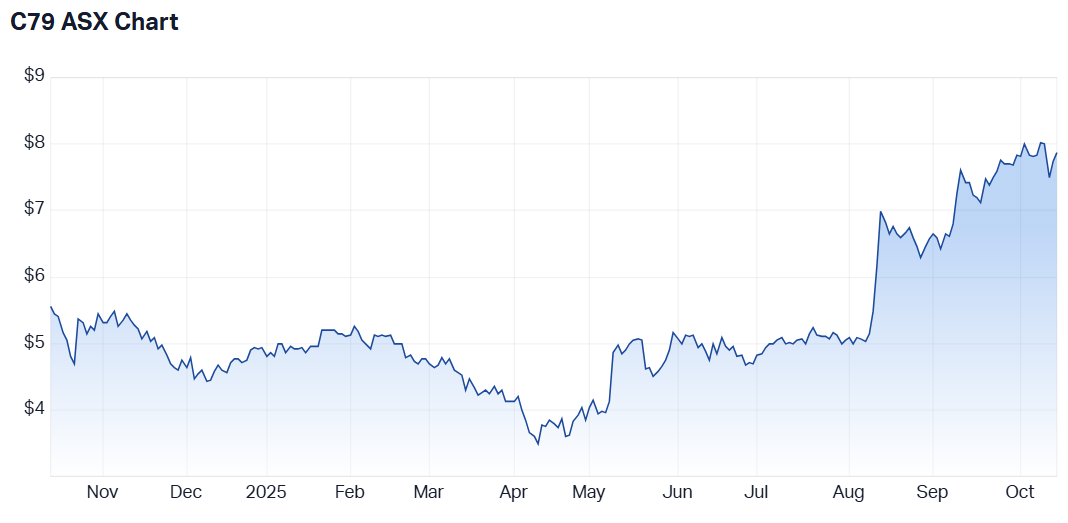
Chrysos is rewriting how miners test ore. Its PhotonAssay technology uses high-energy X-rays to analyse samples in minutes, replacing the hazardous, time-consuming fire-assay method.
Adoption is accelerating, with contracts from major labs and miners worldwide. Resources veteran Bill Beament, who took Northern Star Resources from a junior play to a major gold producer, owns 1.1 million shares in Chrysos — a powerful endorsement.
Shaw & Partners recently called Chrysos “a standout quality growth stock going cheap,” noting its Newmont contract “reinforces that PhotonAssay is the future.” Its $6.80 price target has already been surpassed.
Market cap: A$879M | 12-month performance: +40% | Green flags: Coverage by Ord Minnett, Shaw & Partners, Barrenjoey; featured on Livewire by Barry FitzGerald

2 Oklo (NYSE:OKLO)
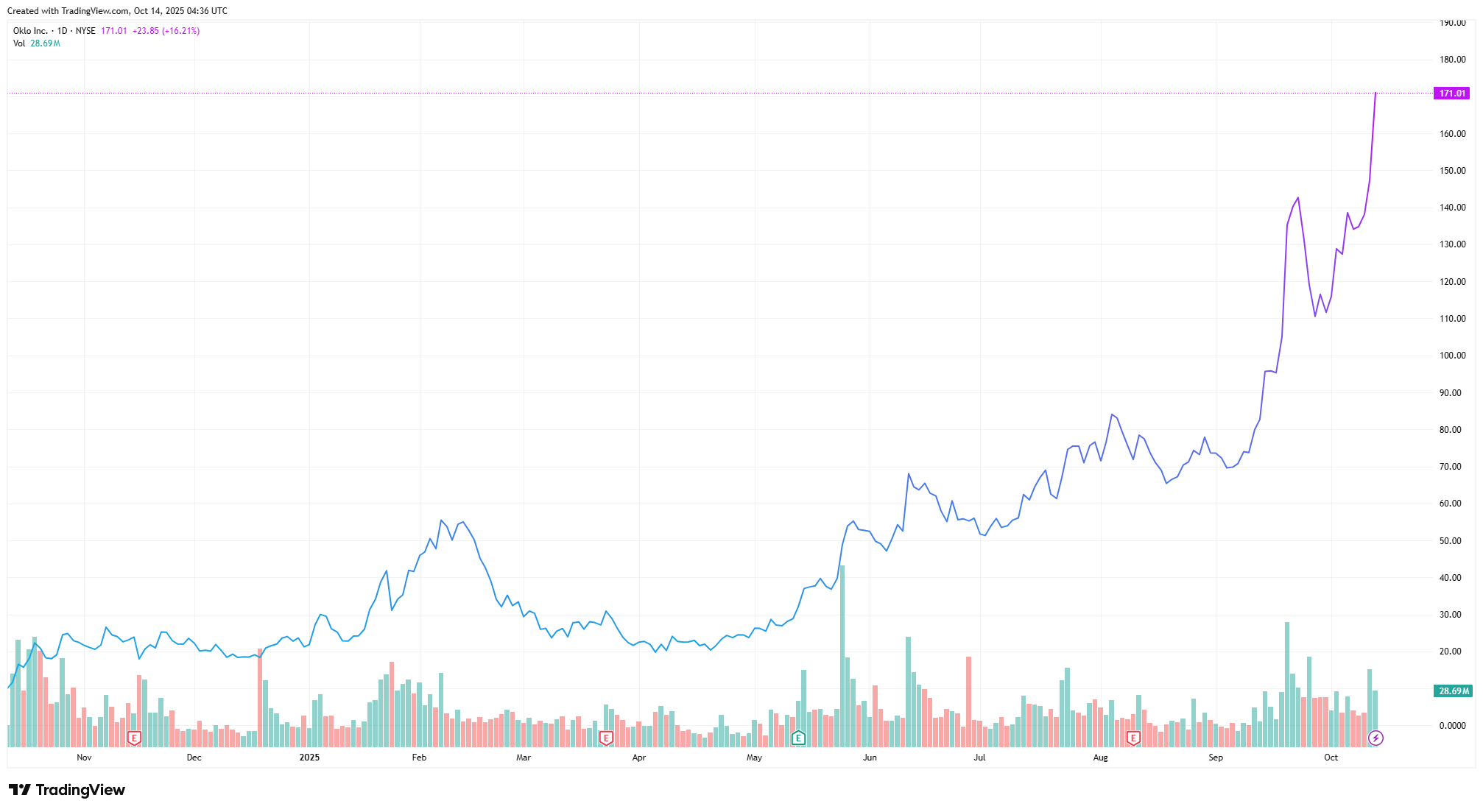
Nuclear’s next chapter is micro, and Oklo could be its poster child. The company is developing compact fast reactors designed to deliver continuous, carbon-free power for data centres, defence bases, and remote towns.
Its “Aurora” design has received U.S. Department of Energy (DOE) approvals, and early funding came from OpenAI’s Sam Altman, who also previously chaired the company.
Oklo is a key beneficiary of Donald Trump’s One Big Beautiful Bill Act, which prioritises revitalising America’s nuclear and industrial base. As such, Uncle Sam has a vested interest in technologies that can power the nation’s manufacturing resurgence and cement its AI leadership.
Bloomberg recently noted Oklo fits neatly into the AI power-play theme, estimating tech companies could tip in US$350 billion to secure reliable energy sources - “speeding deployment and benefiting developers such as Oklo.”
Still, it’s deep in a cash-burn phase, with about US$650 million in liquidity and reliant on tax credits to make project economics work.
Market cap: US$25B | 12-month performance: +1,603% | Green flags: Backed by Sam Altman; DOE approval; featured on Bloomberg Markets; covered major Wall Street analysts
3. Heartflow (NASDAQ: HTFL)
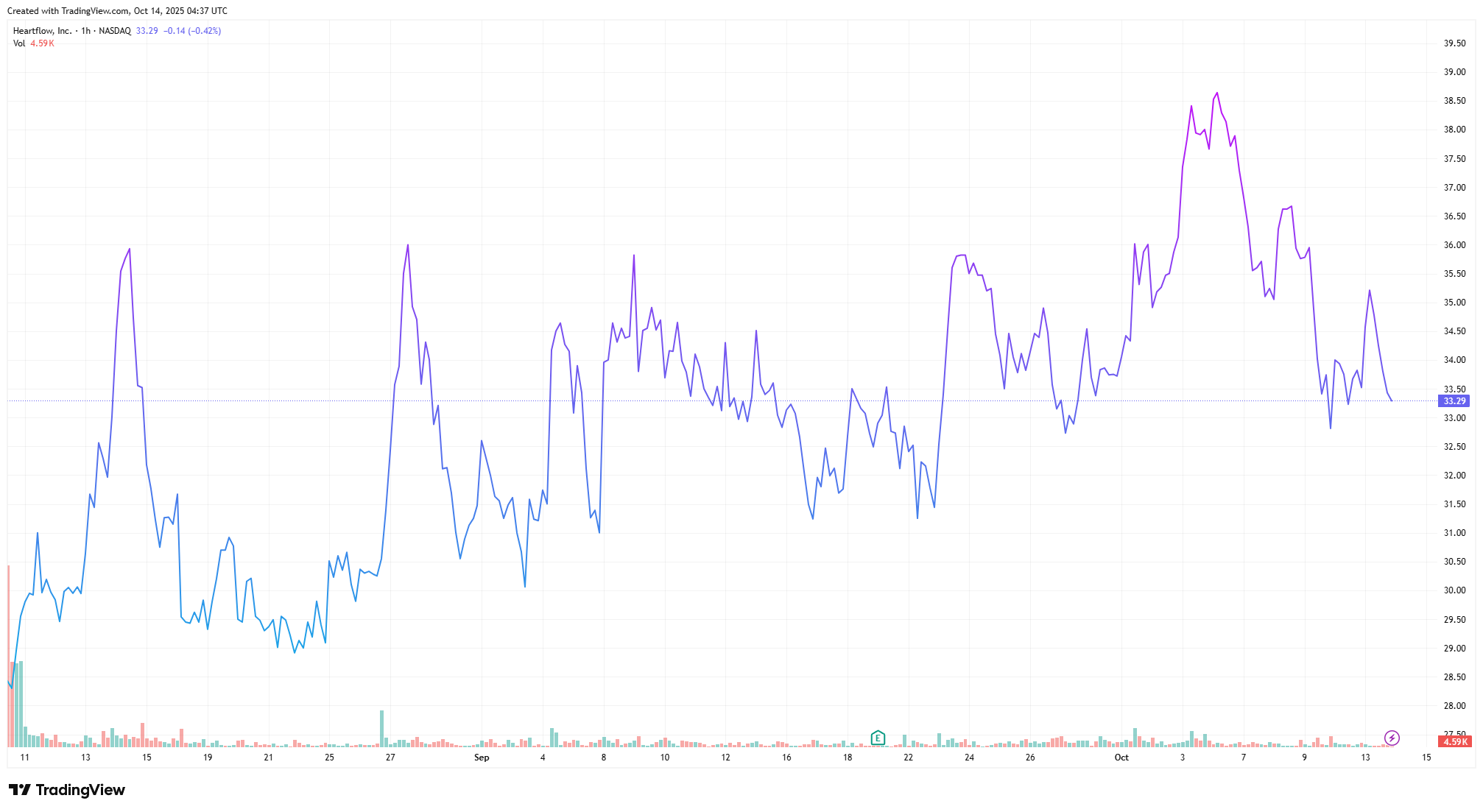
HeartFlow blends AI and medical imaging to transform how doctors detect heart disease. Its software turns CT scans into 3D models that map blood flow, allowing clinicians to identify coronary blockages without invasive procedures.
The company already has FDA clearance, reimbursement from major U.S. insurers, and endorsements from top cardiology bodies. In September, it announced that Cigna will cover its HeartFlow Plaque Analysis across all plans — a huge validation from a major insurer.
Bloomberg projects HeartFlow could drive 25%+ annualised sales growth through 2030, capturing share in a US$2.1 billion addressable market. Revenue may reach US$233 million in 2026, up 33% year-on-year.
Market cap: US$2.77B | Performance since listing in August 2025: +16% | Green flags: FDA approved; covered by Piper Sandler, J.P. Morgan and Stifel
4. Rocket Lab USA (NASDAQ: RKLB)
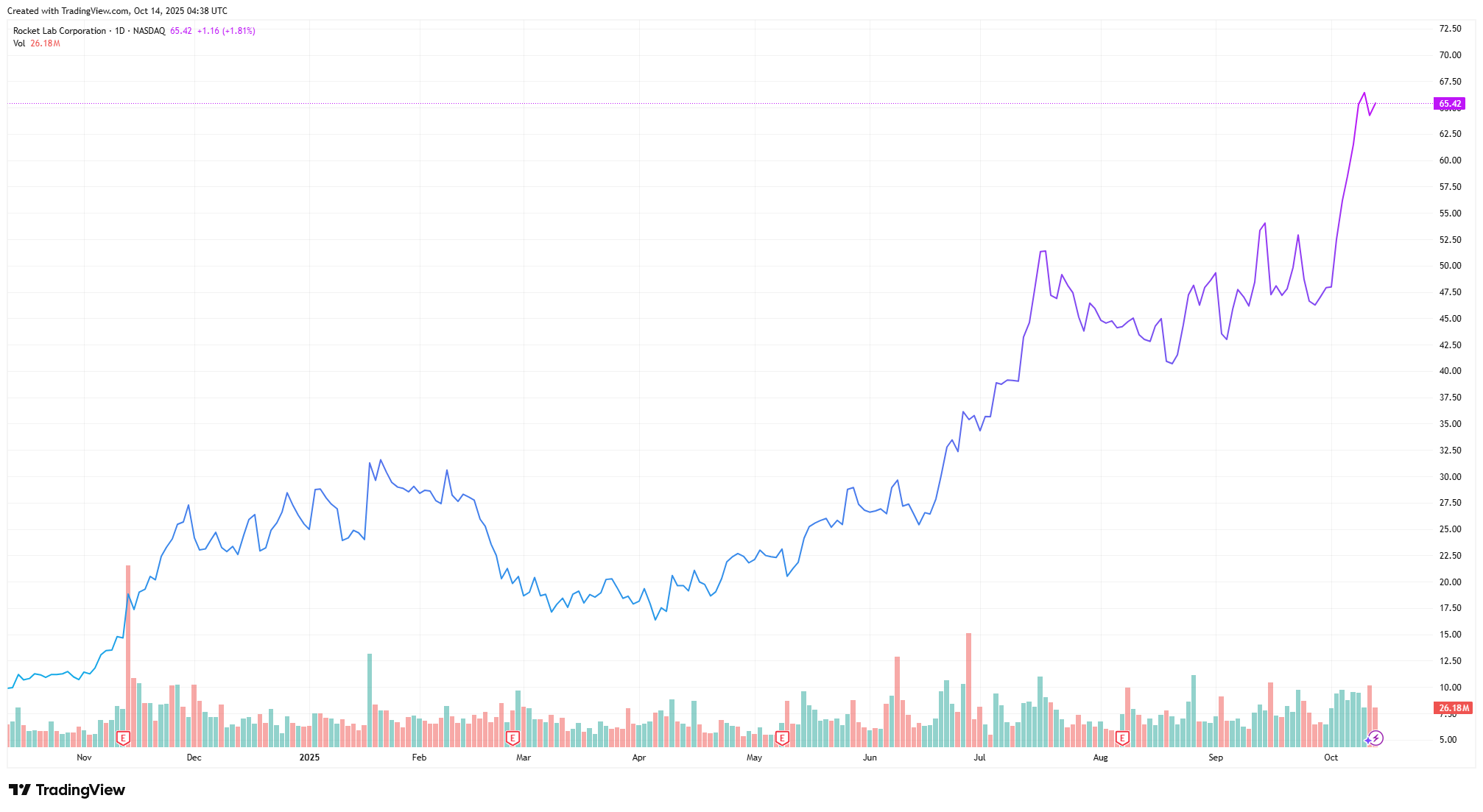
Rocket Lab wants to be the SpaceX for small payloads. Its Electron rocket has completed dozens of successful missions, launching satellites at a fraction of traditional costs.
It’s now developing the larger, reusable Neutron rocket to capture the booming constellation market. With commercial and government contracts - including NASA and the European Space Agency - Rocket Lab is one of few space startups with meaningful flight heritage.
Q2 revenue jumped 36% to US$144.5 million, with a US$1 billion order backlog. But cash flow remains negative and execution risk high; a single launch failure could sting. Morgan Stanley values it as “an earlier-stage alternative to SpaceX” and projects 41% CAGR revenue growth to 2029.
Market cap: US$32B | 12-month performance: +562% | Green flags: NASA partner; >95% launch success; covered by Citi, Wells Fargo and Morgan Stanley
5. Alnylam Pharmaceuticals (NASDAQ: ALNY)
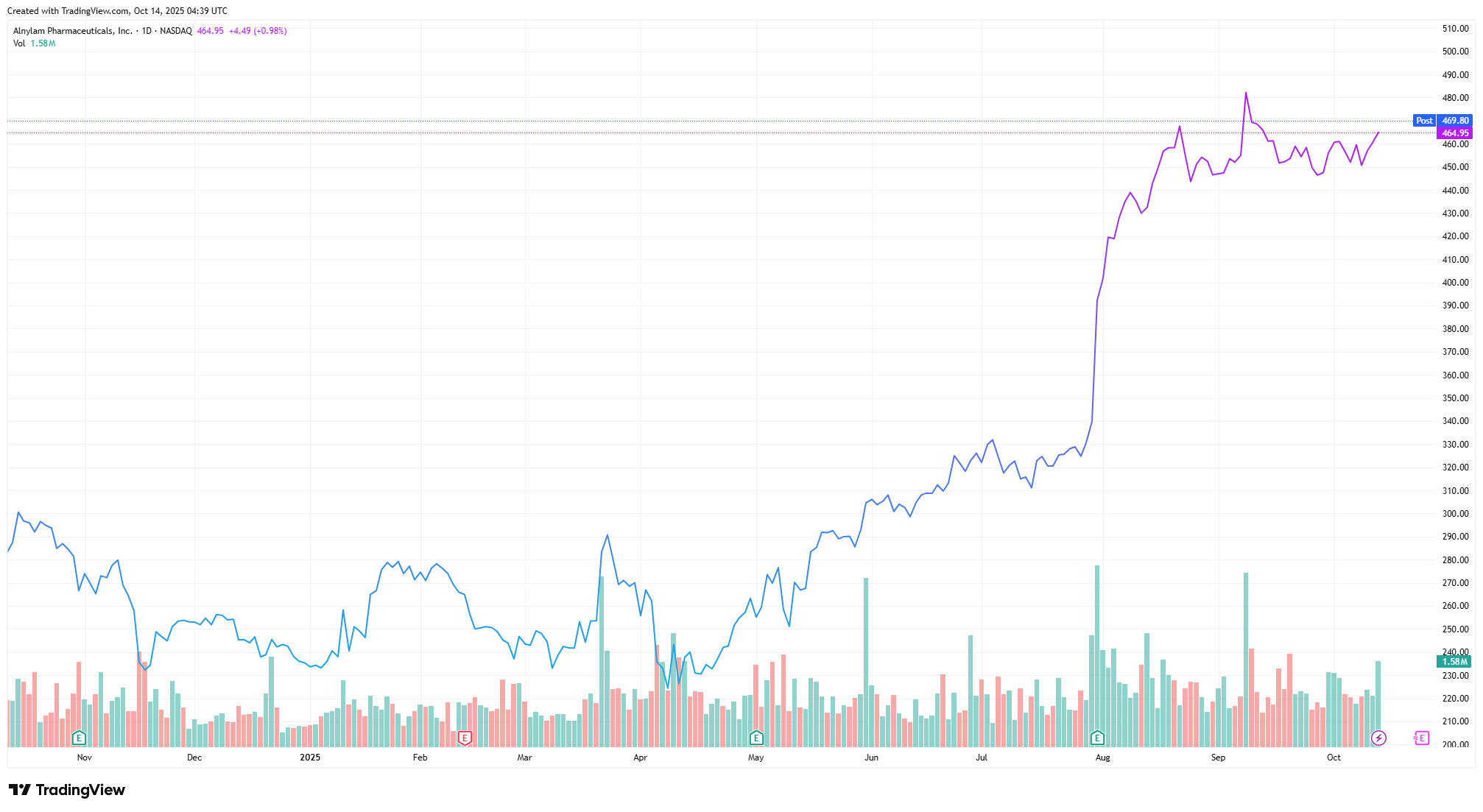
Alnylam is a pioneer in RNA interference (RNAi) therapeutics - drugs that “silence” genes causing disease.
Bloomberg highlighted its treatment Amvuttra as the first approved RNAi therapy for cardiomyopathy, predicting RNAi technologies could capture 60% of a US$14 billion market by 2030. Physician feedback already shows early switching to Alnylam’s product.
While not yet profitable, Q2 revenue jumped 64% to US$672 million, prompting management to lift 2025 guidance 27% to US$2.65-2.80 billion. Profitability may be within reach.
Market cap: US$60.9B | 12-month performance: +64.1% | Green flags: Four FDA-approved drugs; backed by Orbis' Eric Marais and recently featured on Livewire

6. & 7. Rigetti Computing (NASDAQ: RGTI) and IONQ (NYSE: IONQ)
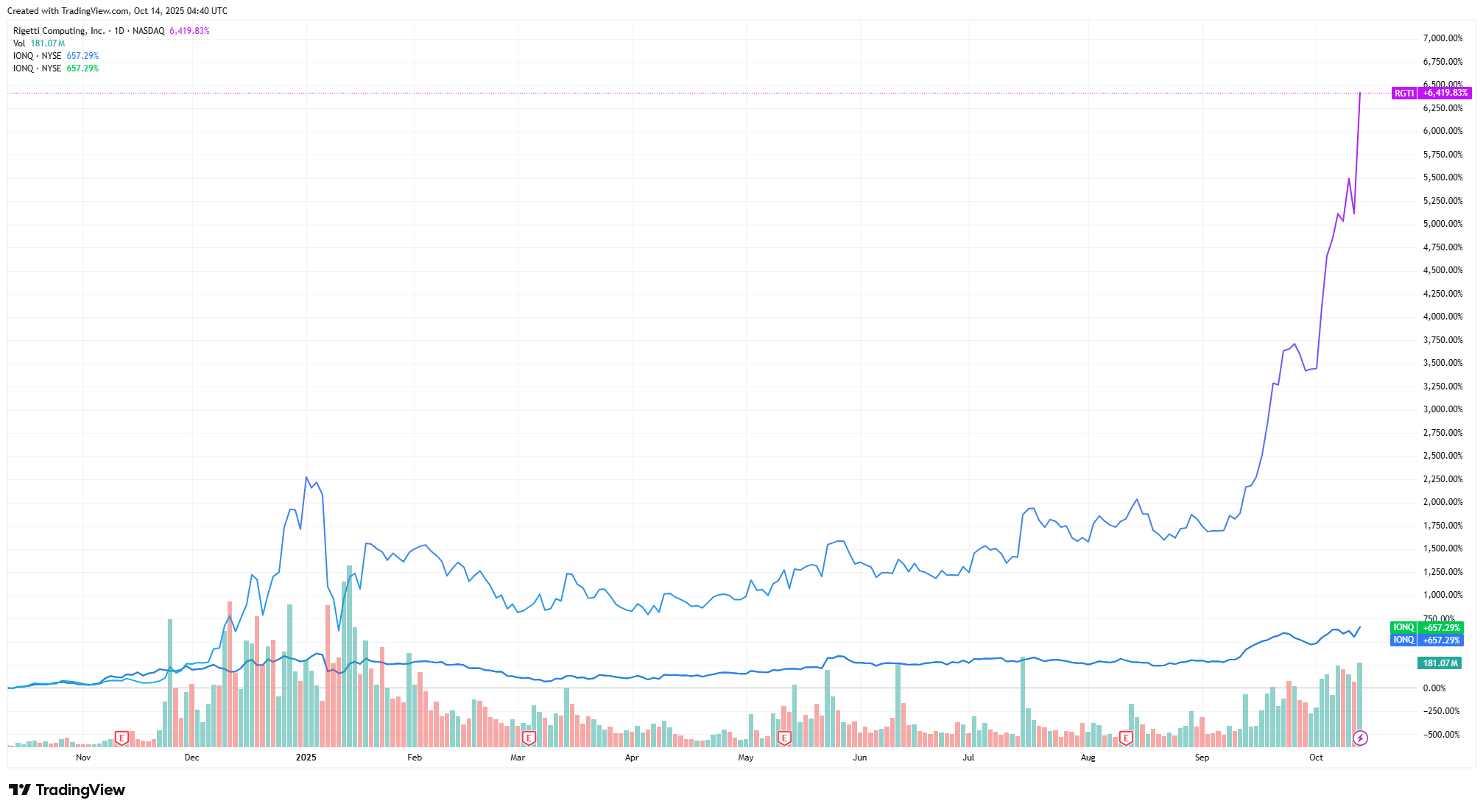
Quantum computing is moving from theory to testbed.
- Rigetti recently won a US$5.8 million, three-year contract from the U.S. Air Force Research Laboratory to advance superconducting quantum networking.
- IonQ ranked in Fortune’s 2025 Future 50 list and integrates directly with AWS, Microsoft Azure, and Google Cloud through its quantum-as-a-service model.
Momentum in quantum stocks has been hot, and exploded this week after J.P. Morgan, the largest U.S. bank, pledged US$10 billion to strategic industries, including quantum and advanced computing. Both firms remain unprofitable and heavily dependent on technical milestones - but investor interest is very high.
Rigetti market cap: US$18B | 12-month performance: 6,436% | Green flags: U.S. Air Force partnership; covered by analysts Baird and Deutsche Bank
IonQ market cap: US$27B | 12-month performance: 657% | Green flags: Integration with Big Tech cloud systems; Fortune Future 50 ranking; covered by Morgan Stanley, Cantor Fitzgerald, Rosenblatt
8. Nebius Group (NASDAQ: NBIS)
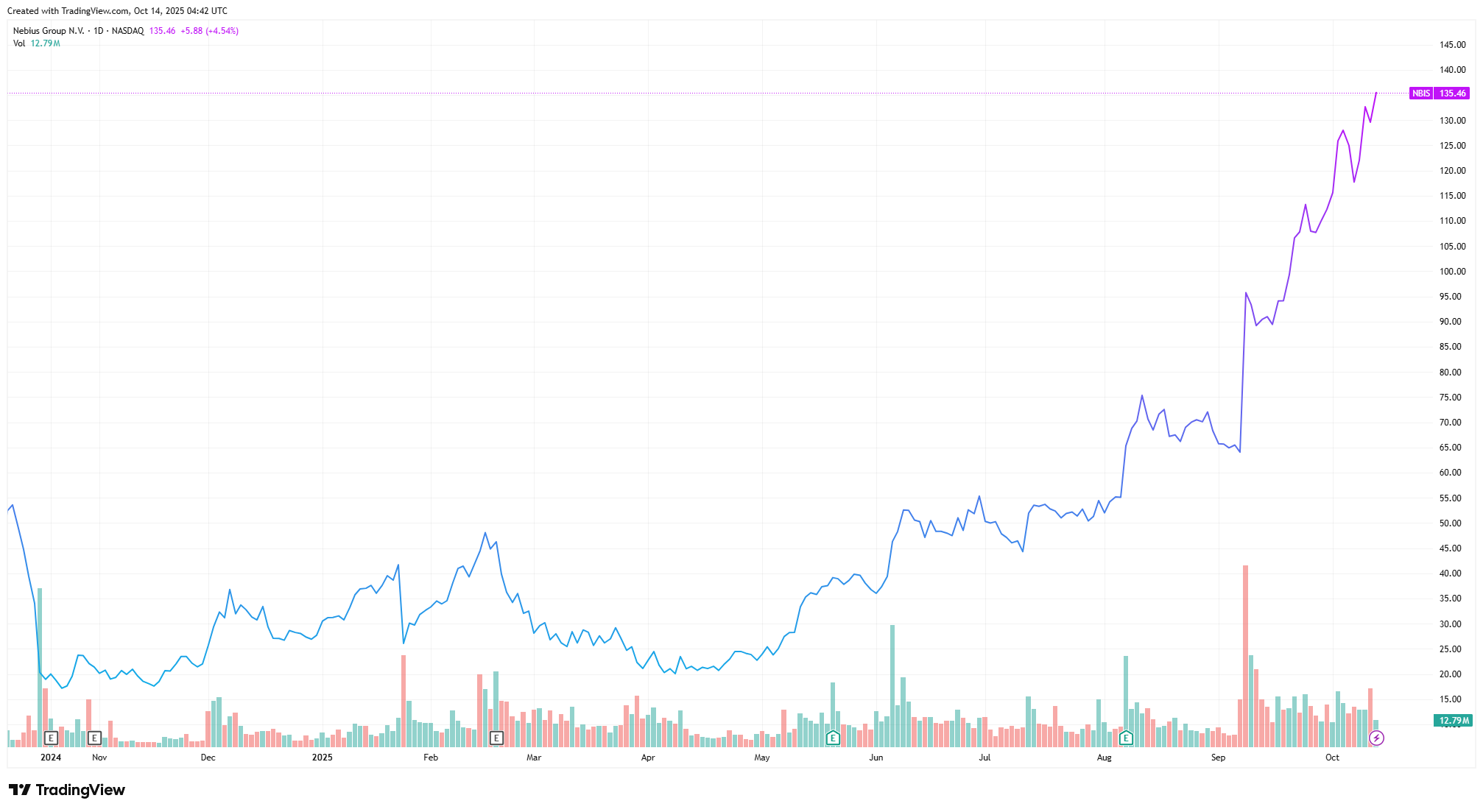
Nebius is Europe’s answer to the U.S. cloud hyperscalers. Its platform combines AI infrastructure, data-centre services, and custom chips for large-language-model workloads.
Described as “the only pure play on Europe’s AI sovereignty,” the company is perfectly positioned as Brussels tightens data-localisation laws. But make no mistake - Nebius is also building serious traction in the U.S.
The stock surged after signing a five-year, US$19.4 billion AI-infrastructure deal with Microsoft, underscoring its trans-Atlantic relevance and the scale of its ambitions. The company also delighted investors by raising its annualised run-rate revenue (ARR) guidance to US$900 million to US$1.1 billion for the end of 2025.
Market cap: US$34B | 12-month performance: 577% | Green flags: Microsoft deal; covered by Wall Street analysts, including Goldman's and BWS
9. SoFi Technologies (NASDAQ: SOFI)
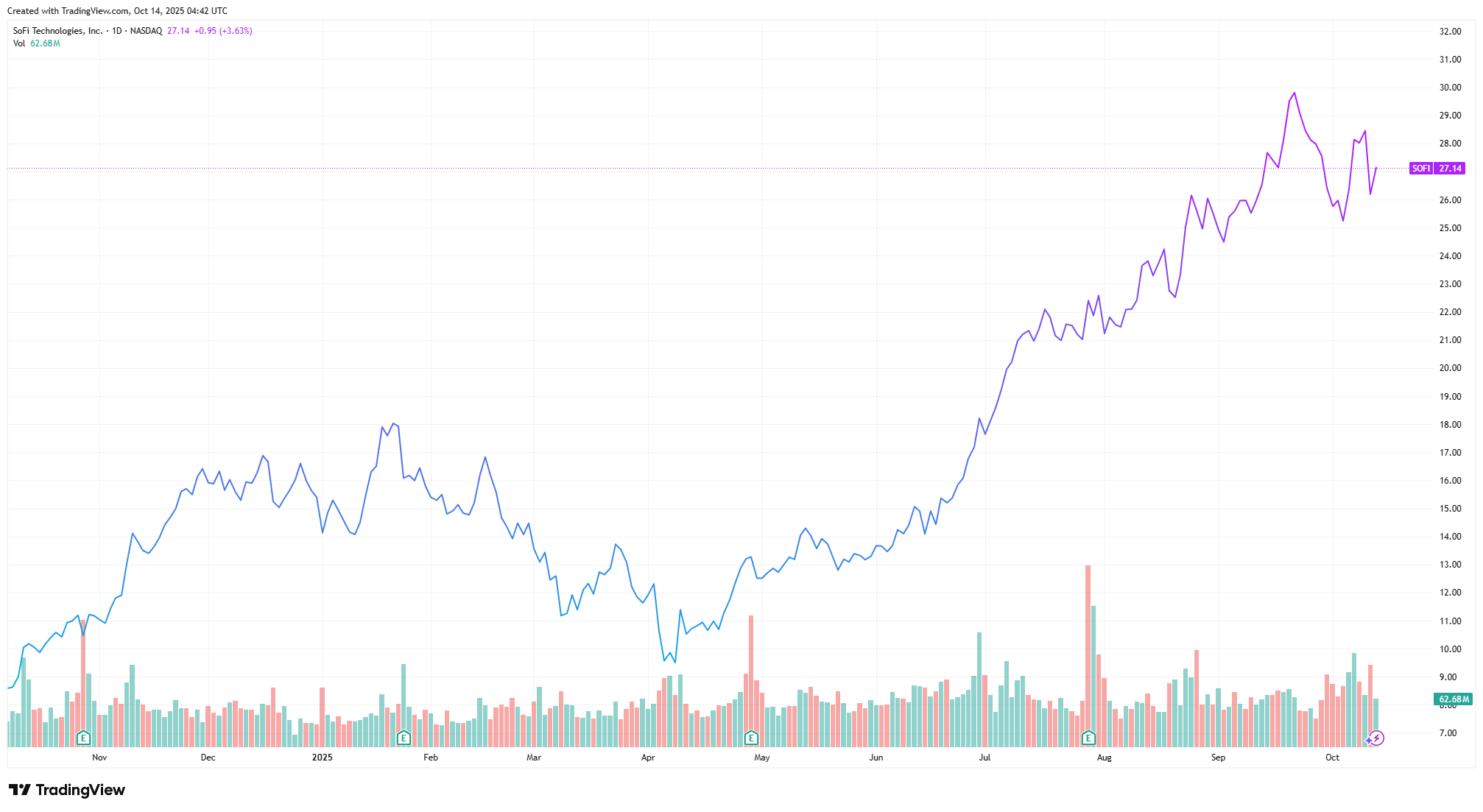
SoFi began as a student-loan disruptor and has evolved into a full-service digital bank. Its app unites lending, investing, and savings under one brand - resonating with younger consumers.
Revenue is approaching US$1 billion, growing at more than 40% annually, and SoFi has upgraded its FY-2025 guidance across revenue, margins, and profit. Meanwhile, the Trump administration is reportedly weighing the sale of a portion of the federal government’s US$1.6 trillion student loan portfolio to the private sector.
If SoFi participates in that sale, it could mark a once-in-a-generation customer acquisition opportunity - giving the company access to millions of new borrowers and the ability to cross-sell them into its broader ecosystem of financial products.
Market cap: US$32B | 12-month performance: +170% | Green flags: U.S. approval to be a chartered bank; covered by major Wall Street brokers
Watch out!
Most of the companies on this list remain unprofitable. That is precisely the phase where they can deliver the strongest growth - but also come with the highest risk. If execution falters or their products turn out to be duds, losses can be swift and severe. As such, ensure you manage risk appropriately.
4 topics
1 stock mentioned
1 contributor mentioned

